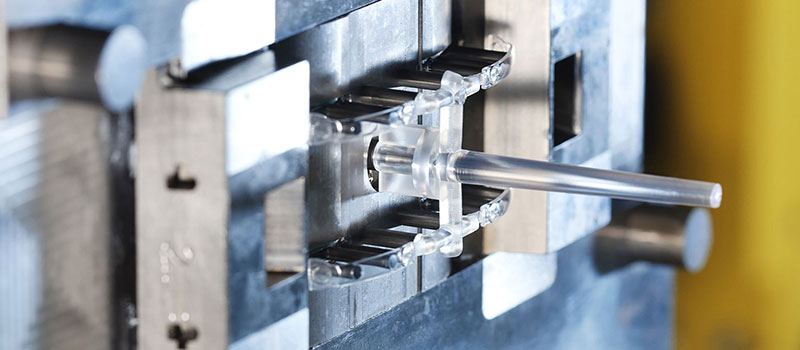中文
ENGLISH
中文
ENGLISH
Injection vowin.cn/en/News/news1251.html' target='_blank'>vowin.cn/' target='_blank'>molding is an important manufacturing process used to make car parts, packaging, toys and many other products.
During the injection molding process, a molten material — often a thermoplastic — is injected into a mold cavity. When the materials cools down, it can be removed from the mold as a finished product. Using this technique, manufacturers can make huge quantities of a single molded part, using the mold over and over again.
But while injection molding is a versatile process used across several industries, not all product designs are suitable for injection molding. Material, shape and feature choices must all be carefully considered before manufacturing begins.

Fortunately, it is easy to design a part suitable for injection molding by following a few basic principles.
Wall thickness depends on the material
Determining the appropriate wall thickness for a part can depend on various factors: whether the part is structural, whether the part could become fragile and, crucially, what the chosen material will be.
Luckily, manufacturers don’t have to go through the process of trial and error, because common injection molding materials each have recommended wall thicknesses.
| Material | Wall Thickness (inches) |
| ABS | 0.045 – 0.140 |
| Acetal | 0.030 – 0.120 |
| Acrylic | 0.025 – 0.500 |
| Liquid Crystal Polymer | 0.030 – 0.120 |
| Long-fiber reinforced plastics | 0.075 – 1.000 |
| Nylon | 0.030 – 0.115 |
| Polycarbonate | 0.040 – 0.150 |
| Polyester | 0.025 – 0.125 |
| Polyethylene | 0.030 – 0.200 |
| Polypropylene Sulfide | 0.020 – 0.180 |
| Polypropylene | 0.025 – 0.150 |
| Polystyrene | 0.035 – 0.150 |
| Polyurethane | 0.080 – 0.750 |
Adding draft makes the part easier to remove
When designing a part for injection molding, it is beneficial to add draft to the part’s faces. Draft, or tapering, is when the sides of a part are designed at a slight angle instead of running straight. Draft can produce several advantages.
First and foremost, adding draft to a design makes it easier to remove the cooled part from the mold. But it has other benefits too: introducing draft angles reduces the odds of deformation and other problems.
In general, deeper cavities require a higher draft angle, and most engineers use around 1 degree of draft for every inch of cavity depth. However, factors like material, wall thickness and shrink rate can all affect a part’s optimum draft. For this reason, it is helpful to consult an injection molding expert when deciding on the angle.
Radii improve material flow
In addition to determining the appropriate degree of draft for a part, engineers should consider introducing radii to their designs in order to eliminate sharp corners.
Not all parts seem suited to having rounded edges. In fact, some parts demand right angles and sharp corners for their function. However, there are two main reasons why it can be beneficial to have rounded edges on an injection molded part.
For one, non-sharp corners make it easier for the injected material to flow through the mold, which can result in a smoother molding process. Secondly, the removal of sharp corners can improve part integrity, reducing chances of breakage when the part is put to use.
Coring out saves money
One might imagine that injection molding is used to produce fully solid parts, given how the molten material effectively floods the mold cavity. But a more cost-effective way to create molded parts is to “core them out” — make the inside hollow — and use walls and ribs to maintain strength.
Coring out a part reduces its mass and material usage. However, when the walls and ribs are properly designed, the part can remain just as strong as a fully solid part.
A rule of thumb for designing ribs in a molded part is to employ a rib-to-wall thickness ratio of between 40 and 60 percent the thickness of the part’s surface. In other words, the ribs should be about half as thick as the area of the part that has not been cored out.
Besides saving on material costs and reducing weight, coring out helps to produce better injection molded parts by reducing sink and stresses.
Undercuts or no undercuts?
Simple designs are easier to turn into injection molded parts than complex ones. But in many cases, removing complex features would be detrimental to the performance of the finished part.
That means engineers must sometimes turn to more complex designs, which include features like undercuts: elements of a part that, because of their shape and placement, prevent the molded part from being ejected directly from the mold.
When a design incorporates one or several undercuts, the mold generally needs to be formed of multiple components to enable a side-pull motion. This naturally increases costs, since the mold is of a more complex nature.
Designers thus have two options: simplify the design to eliminate undercuts, or consider how to accommodate the existing design.
Choosing the right partner
If designing a part for injection molding still seems overly complex, the best thing to do is consult an injection molding specialist.
3ERP is one such specialist, with years of experience creating molded parts for a range of clients.
We offer a reasonably priced injection molding service, with parts available in a range of plastics, including polycarbonates, nylons and thermoplastic elastomers.


